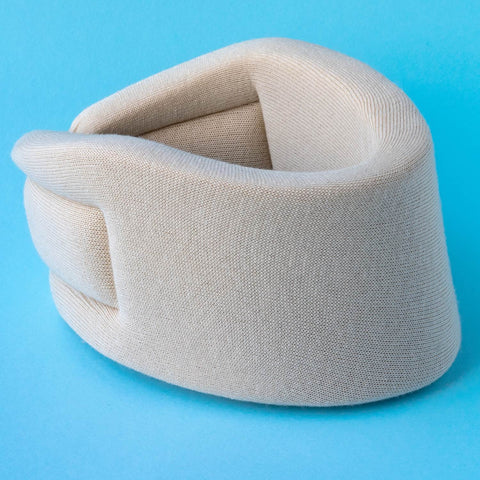When it comes to the safety of your baby, you want to make sure you have all the right information. A common question parents ask is at what age can you give a baby a pillow. Experts generally recommend waiting until your baby is at least 12 months old before introducing a pillow into their sleeping environment. This guideline is crucial to help reduce the risk of suffocation and ensure a safe sleep space for your little one.
Even after your child turns one, there's no pressing need to add a pillow immediately. Many toddlers continue to sleep comfortably without one for months or even years. In some cases, pillows can pose additional hazards, such as getting caught in the crib's walls or potentially obstructing your child's breathing.
Before making the decision to introduce a pillow, it is advisable to consult with your pediatrician. Keeping your baby's sleeping space free of pillows, blankets, and stuffed animals for the first year can significantly reduce risks and help promote a safe sleep environment. Following these guidelines can provide peace of mind and the safest conditions for your baby's rest.
The Ideal Age for Introducing a Pillow
The question of when to introduce a pillow to your child's sleep environment is common among parents. Experts, including the American Academy of Pediatrics (AAP), recommend waiting until your child moves to a toddler bed, usually around 18 months to 2 years.
For babies under the age of 1, pillows pose a significant risk of suffocation. Infants are not able to push the pillow away from their faces, making it unsafe for them in a crib.
Between ages 1 and 2, the risk of Sudden Infant Death Syndrome (SIDS) decreases. However, many experts still advise against pillows until the transition to a toddler bed occurs.
Once your child shows signs of readiness for a toddler bed, typically around 18 months to 3 years, you can consider introducing a small, firm toddler pillow. Children at this stage have more control and can navigate around a pillow safely.
To ensure safety, opt for pillows specifically designed for toddlers. These pillows are smaller and firmer, providing optimal support without posing a suffocation hazard.
Despite the transition period, some toddlers may not need or want a pillow immediately. Observe your child's comfort and adjust accordingly, ensuring their sleep environment remains safe and comfortable.
In summary, waiting until the move to a toddler bed is the safest approach. Assess your child's readiness and always prioritize safety over convenience.
Understanding the Risks Involved
Providing a baby with a pillow too early can pose significant risks, such as suffocation hazards, developmental concerns, and the increased risk of Sudden Infant Death Syndrome (SIDS). Here are the key points you should consider:
Suffocation Hazards
Babies' airways are delicate and still developing. Pillows, particularly those with soft or loose filling, can block a baby's airway, causing a risk of suffocation. Even for toddlers over 12 months old, soft bedding can get trapped between the crib walls and obstruct breathing. Therefore, it's crucial to keep the sleeping environment free of pillows and other items that could increase the risk of suffocation.
Development and Safety Concerns
Introducing a pillow too soon can affect your child's physical development. Babies don't need pillows as their neck and spine are naturally aligned when lying flat on their backs. Using a pillow can disrupt this alignment, potentially causing strain. Additionally, babies can use pillows as steps to climb out of the crib, increasing the risk of falls and injuries.
Preventing Sudden Infant Death Syndrome (SIDS)
SIDS is a critical concern for infants under 12 months old. The risk of SIDS increases with the use of soft bedding, such as pillows. Studies recommend that babies should always sleep on their backs on a flat, firm surface without any loose or soft bedding. Ensuring that the crib remains empty of items that could cause suffocation or facilitate unsafe sleeping positions is essential for reducing the risk of SIDS.
Choosing the Right Pillow
Selecting the right pillow for your baby or toddler involves considering their age, size, and any specific needs to ensure proper neck support and safety.
Types of Baby and Toddler Pillows
Various types of pillows are available to cater to different stages of your child's development. For infants, nursing pillows provide support during feeding and are not meant for sleeping. As children grow, you can introduce a baby pillow or a toddler pillow.
Baby pillows (around 10x16 inches) are suitable for children between 18-24 months. Toddler pillows (typically 13x18 inches) are designed to provide proper neck support for kids aged 2-4 years old. It's essential to choose a pillow labeled as hypoallergenic to reduce the risk of allergies.
Factors to Consider
Safety is the paramount concern when selecting a pillow for your child. Ensure the pillow is firm enough to prevent suffocation but soft for comfort. Materials like cotton provide breathability and washability.
Consider the firmness and size of the pillow. A pillow that is too thick or soft can be dangerous. Consulting a pediatrician can help address any specific concerns, especially if your child has allergies. Look for pillows made from hypoallergenic materials to minimize allergen exposure.
Lastly, ensure the pillow can be easily washed to maintain hygiene and reduce potential irritants.
Best Practices for Safe Sleep
Ensuring your baby sleeps safely involves creating an optimal sleep environment and following guidelines for sleep positioning. These practices lower the risk of sleep-related injuries and Sudden Infant Death Syndrome (SIDS).
Setting Up the Sleep Environment
A safe sleep environment starts with the right crib. Choose a crib that conforms to the latest safety standards and avoid using old or second-hand cribs that may not meet safety protocols.
Use a firm mattress that fits snugly within the crib to prevent gaps where your baby could become trapped. Avoid using soft bedding, such as blankets or baby pillows, as these can pose suffocation risks. Instead, dress your baby in a one-piece sleeper to keep them warm.
Ensure that the crib is placed away from window blinds, electrical cords, and other items with strings or ties. These pose strangulation hazards. Keep the crib clear of stuffed animals and toys, which can also be suffocation risks.
Sleep Positioning and Support Items
Always place your baby on their back to sleep. This position significantly reduces the risk of SIDS. Combining back sleeping with a firm mattress enhances safety.
Avoid using sleep positioners, as they do not provide any proven benefits and may increase the risk of suffocation. Swaddling can be helpful if done correctly, as it reduces the need for soft bedding. Ensure the swaddle is snug but not too tight, allowing ample room for hip and knee movement.
Use wearable blankets as an alternative to loose blankets. Keeping your baby's head and face uncovered during sleep is critical. Avoid using pillow-like items or inclined sleep products, as these are not approved for safe sleep and pose additional risks.
Maintaining these safe sleep practices will help safeguard your baby's well-being during rest times.
Transitioning From Crib to Toddler Bed
Transitioning your child from a crib to a toddler bed is a significant milestone. Most toddlers make this move between 18 months and 3.5 years old. The timing depends on your child's readiness and safety considerations.
Safety is the top priority. Ensure the new bed has guardrails to prevent falls. Position the bed away from windows, cords, and sharp furniture edges.
Place the toddler bed in a corner to utilize the walls for added security. This setup can boost your child's sense of safety and prevent injuries.
When introducing blankets and pillows, choose ones that are small and firm to reduce the risk of suffocation. Replace your toddler's old crib setup gradually to help them adjust.
Create a consistent bedtime routine to ease the transition. This might include familiar activities like reading a book or singing a lullaby.
Check the bed's manufacturer's guidelines for weight limits and other safety instructions. This can help in determining when to switch from a toddler bed to a regular bed.
Staying attentive to your child's needs and progress can make this move smoother for both of you.



